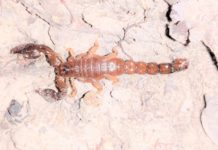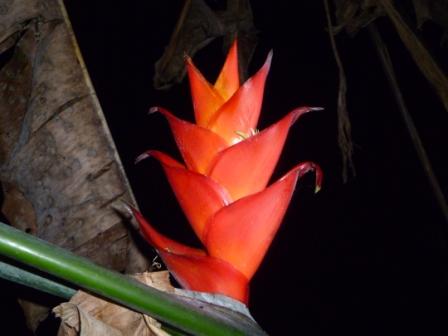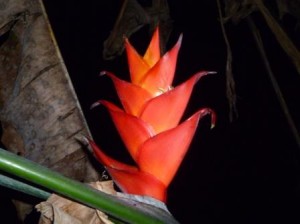
With the volunteers merrily on their way I wanted to give a brief summary of the progress here in Montserrat and to highlight the immense achievements of the project recognised so far. To date, this project has achieved a successful release of captive-bred mountain chickens bred from a population rescued off island by Durrell and the Montserrat Department of Environment as a rapid response to the discovery of chytrid in 2009. Although a few of the released animals have been showing signs of the disease and four animals out of 64 have been discovered dead, the team continue to find the majority of the frogs in a good healthy condition. This is an incredible achievement as despite the neces
sity of trialling this release for the long-term survival of the frogs, no-one can ever truly know the fates of these animals until they are set free into the wild. Therefore the intense dedication from the volunteers and project staff to closely monitor these animals has been more than worth the knowledge that mountain chicken’s can indeed be successfully released into Montserrat and (with lots of hard work) be monitored closely enough to follow their progress for at least the following three months.
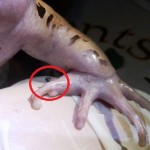
Now with the onset of rain, we have even heard some of the males calling and developing black spurs (a sign of breeding condition) which is even more encouraging with the possibility that these animals may breed over the next coming months. Due to an incredibly dedicated team of volunteers and project staff intensively radio-tracking these animals 6 nights per week we have gained an incredible amount of data. Who knew that a mountain chicken could move over 200m down a forest ghaut in just a few hours, or that such large frogs can fit into such small spaces? This data will be invaluable in helping us understand more about this Critically Endangered species in order to help us increase its’ chances of survival in the future.
In addition to the release the project has also extensively surveyed four ghauts where surviving mountain chicken populations were thought to be residing still. So far surviving wild animals have been found in two of these ghauts and as we are coming into the breeding season, more frogs have been heard calling in some of the surrounding ghauts. Without this project it would not have been possible to monitor these animals so closely and it is essential that we map and monitor the surviving populations as they could hold the key to the survival of the species.
Lastly, the project has also been focused on the task of monitoring background levels of the chytrid fungus at chosen sites across the Centre Hills. Continuous monitoring of levels of the fungus over long periods of time has not been done on Montserrat before and so no-one knows whether there is any variation in chytrid levels over time or location. Data like this could help us to understand more the fungus and how it operates on Montserrat and therefore assist in understanding the interactions between the fungus and the frogs.
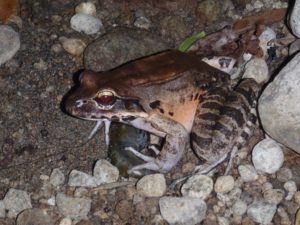
In summary, the progress of the project continues to go well but the results of the release and the continued general health of our new frog population is extremely encouraging. I want to say a final thank you to our volunteers for their incredible level of dedication and commitment to the project, and of course to the Darwin Initiative for funding our work here in Montserrat.
– Sarah-Louise Smith (Project coordinator)




